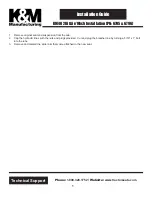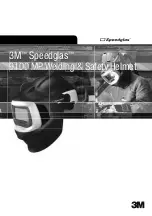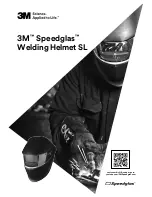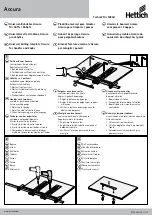
7
Stages of pack job-rotation-induced-line-twists:
1. Parachute extends to line-stretch in a more horizontal position than a typical skydive due to
the wingsuit’s glide path.
2. Pack job expansion and parachute inflation is delayed by packing technique, burble (wake
turbulence), or other factors.
3. Pack job rotates, caused by burble (wake turbulence), and delayed pack job expansion. Line
twists are now set.
4. Pack job expands, with the line twists set. Canopy inflation occurs, with line twists set between
the slider and the risers.
5. Jumper is suspended beneath the canopy with line twists set, and must now rotate his/her
body under the canopy to resolve the line twists.
What happens next depends on many factors. If the jumper/pilot has induced an asymmetry in
the system by giving unequal harness input, there may be a weight-shift input locked into the twists,
which can cause the parachute to begin a turn. If the turn is steep enough, the parachute may
begin a spiral (oftentimes incorrectly referred to as a “spin”) descent.
ALL canopies are susceptible to line twists when they are subjected to wingsuit wake turbulence
at line stretch. The EPICENE is no exception. Therefore, please consider these points and adjust
your packing technique accordingly. By not rolling the tail too tightly around the pack job you can
help to encourage a faster expansion, which can also mean a harder opening. For that reason,
you must understand how to control your airspeed and angle of attack during deployment. The
EPICENE’s design and materials are optimized to provide a tolerable opening even with a faster
than average canopy expansion (the EPICENE is designed to “snivel” less than traditional skydive
parachutes, and open faster without “slamming” the jumper). There is a fine line between fast
openings and hard openings. When packed properly and deployed at moderate airspeeds, the
EPICENE’s opening characteristics maximize the on-heading design we have tested, making the
canopy ideally suited for wingsuiting.
The EPICENE is designed to be less susceptible to rapid descending spirals (oftentimes incorrectly
referred to as “spins”). Due to several design factors including aspect ratio, extensive testing has
shown that the EPICENE is more likely (compared to a typical 9-cell ZP canopy) to maintain level
flight after opening with line twists, affording the pilot with more time to deal with the situation.
Body-twists
It is also possible, but less common, for the wingsuit pilot to experience rotation of his/her body
underneath an inflated or partially-inflated canopy during and immediately after opening. This can
be caused by asymmetric body position or an off-heading opening of the parachute.
Hard Openings
Most factors surrounding parachute openings can be controlled or influenced by the jumper. If you are
experiencing hard openings, then you need to make adjustments to one or more of the following factors:






























